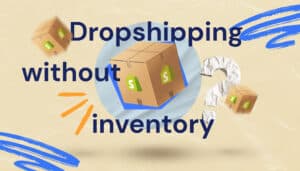Selling wholesale on Shopify should feel effortless. A buyer places a $15,000 order on Net 30 terms, inventory updates across locations, and an open invoice appears in QuickBooks: ready to reconcile when the customer pays later from their Shopify account. Thirty days pass, payment clears, and the books balance without you lifting a finger.
But the reality is rarely that simple. Instead of one seamless workflow, every Shopify wholesale order sets off extra tasks. Invoices must be recreated in QuickBooks, buyers flood support asking about balances, and inventory drifts out of sync, leading to oversells or phantom stockouts. What should be a win quickly becomes a drain on time and accuracy.
Yet it’s not because Shopify falls short on the front end. In fact, Shopify has built a strong foundation for wholesale commerce. The friction shows up later, after the sale, when accounting and operations need to stay in step with the buying experience.
Where Shopify Wholesale Starts Strong and Where it Breaks
Shopify’s B2B toolkit is built for complex wholesale requirements:
- Company profiles and permissions: organize buyers by hierarchy, with tailored payment terms and approval levels.
- Custom catalogs: show wholesale customers only the products and pricing negotiated for them.
- Net terms and PO fields: support standard Net 30/60 practices while capturing the documentation buyers need.
- Self-serve portals: give buyers the Amazon-like convenience of dedicated account access and streamlined checkout.

These features shine at capturing orders and managing relationships.
The trouble starts after checkout, when Shopify and QuickBooks operate in silos. Invoices are rebuilt by hand, customers lack real-time visibility into balances, and inventory lags between systems. Those cracks aren’t minor; they grow into three recurring accounting challenges that almost every wholesale merchant faces.
Three Shopify Wholesale Accounting Breakdowns
The disconnect between Shopify and QuickBooks creates specific pain points that compound as wholesale volume grows. Here’s where most merchants hit operational walls.
1. Manual Invoice Recreation
When a wholesale customer places a Net 30 order, nothing posts to QuickBooks automatically. Every detail has to be keyed in:
- Line items.
- PO numbers.
- Payment terms and due dates.
- Customer details.
At 10–15 minutes per invoice, the hours add up fast. And when you’re running both retail and wholesale channels, the complexity doubles:
- Retail requires immediate sales receipts.
- Wholesale requires proper invoices with terms.
This manual burden takes a real toll on businesses. QuickBooks Enterprise research shows that 91% of companies say manual data handling kills productivity, and 88% link it to lower morale. Skilled staff end up wrestling spreadsheets instead of focusing on growth.

2. Customer Service Overload
Wholesale buyers also need visibility. However, Shopify’s portal only shows past orders, not open invoices or balances, because that information lives in QuickBooks. The result is endless support tickets asking, “Can you send me a copy of my invoice?”
The confusion deepens when customers pay directly in QuickBooks. Their Shopify account still shows “unpaid,” leaving them unsure what has cleared and what hasn’t. Duplicate payments and delayed reconciliations are the all-too-common fallout.
3. Inventory Accuracy Problems
Inventory sync is another weak point. When Shopify and QuickBooks show different stock levels, you end up with:
- Overselling products that aren’t available.
- Hiding items that are sitting in your warehouse.
- Inaccurate COGS and financial reporting.
Manual adjustments once a day or, worse, once a week, create long gaps of unreliable data. For wholesale orders worth tens of thousands, that can lead to partial shipments, broken promises, and damaged relationships.
How MyWorks Fixes Shopify Wholesale Accounting Issues
The bottlenecks slowing down your Shopify wholesale accounting don’t have to be fixed manually. MyWorks keeps Shopify and QuickBooks in constant two-way sync (every five minutes), so both systems stay accurate and responsive to the very different needs of retail and wholesale.
It’s the missing piece that makes selling wholesale on Shopify as seamless as running your DTC channel.
Intelligent Order Processing by Order Tag
Manual invoice recreation disappears. MyWorks’ Settings allow you to automatically distinguish between retail and wholesale orders based on Shopify order tags:
- Retail customers: orders sync to QuickBooks as sales receipts, marked paid right away.
- Wholesale customers: orders sync as estimates or open invoices with Net 30, Net 60, or custom terms, ready to be settled later.

Due dates are calculated automatically, and every detail, including line items, quantities, pricing, and PO numbers, flows across without retyping. When payments are collected, MyWorks updates the invoice to “closed” in QuickBooks and marks the Shopify order as Paid, so nothing slips through the cracks.
Complete Customer Financial Visibility
Wholesale buyers don’t have to chase your team for invoices. MyWorks brings QuickBooks Online data directly into your familiar Shopify customer account area:
- View open invoices, balances, and due dates in real time.
- Settle invoices instantly through integrated “Pay” buttons linked to QuickBooks’ secure gateway (credit card or ACH).
- See payment status reflected back in Shopify the moment it clears in QuickBooks.
That means wholesale buyers can order now, log in later, and pay when terms are due without creating confusion or duplicate payments.

Real-Time Inventory Synchronization
Stock stays consistent across both systems, if you choose to sync inventory in MyWorks’ Settings. A sale in Shopify reduces inventory in QuickBooks. New inventory received against a PO in QuickBooks pushes updates back to Shopify across all locations.
With syncs running every five minutes, there’s a single source of truth for inventory management, Cost of Goods Sold, and availability. This means there will be no more phantom stockouts, overselling, or daily manual adjustments.
Advanced Financial Mapping
Wholesale businesses often need reporting that goes deeper than “paid vs. unpaid.” MyWorks gives you full control over how data maps into QuickBooks:

- Assign Classes, Customers, and Locations automatically, so wholesale transactions are tracked separately from retail.
- Map Shopify Plus Companies and Locations to one, or multiple, QuickBooks customers for consolidated reporting.
- Apply rules based on tags or collections (e.g., orders tagged “Trade Show” map to a Trade Show Class in QuickBooks).

This unlocks granular Profit and Loss reporting by channel, product line, customer type, or event without manual sorting.
Simple Setup, Immediate Impact
Implementation doesn’t mean another platform to learn. MyWorks runs inside your Shopify admin, with a guided setup that can take under an hour, depending on your business’ complexity. Existing customer and product data migrates cleanly, and advanced mapping rules can be tailored to your exact workflow. Most merchants see smoother wholesale operations within the first day.
Transform Your Shopify Wholesale Operations with MyWorks
Scaling Shopify wholesale isn’t just about getting orders in the door; it’s about building the financial backbone to support them. With MyWorks, your QuickBooks and Shopify data stay aligned in real time, so you can make confident decisions, report accurately, and expand without second-guessing your numbers.
That’s the difference between just selling wholesale on Shopify and running a wholesale operation that’s ready for growth: automation, visibility, and control where it matters most.
Scale your wholesale channel with confidence. Book a demo to see how MyWorks syncs Shopify and QuickBooks in real time, automates reconciliation, and makes selling wholesale on Shopify as seamless as retail.
FAQs About Selling Wholesale on Shopify
Here are answers to some of the most common questions merchants have about Shopify wholesale accounting and managing a Shopify B2B setup with QuickBooks.
1. Is Shopify a Good Choice for B2B Wholesale?
Yes, Shopify Plus offers great B2B functionality, including company profiles, custom pricing, net payment terms, and dedicated customer portals. However, you’ll need proper accounting integration to handle wholesale financial complexities effectively.
2. How Do You Start Selling Wholesale on Shopify?
Running and selling wholesale on Shopify requires more than just creating price lists. You’ll want to:
- Set up company profiles for wholesale customers.
- Build custom catalogs with wholesale pricing.
- Configure net terms and permissions.
- Connect QuickBooks for automated invoicing and ecommerce wholesale reconciliation.
Learn more about ecommerce accounting automation.
3. Which Platform Is Best for Wholesale?
Shopify Plus consistently ranks among the top wholesale platforms thanks to its user-friendly interface, strong B2B features, and app ecosystem. Success depends on the right accounting software integration to keep data accurate across both Shopify and QuickBooks.
4. Does Shopify Have a Wholesale App?
Shopify’s wholesale functionality is built into Shopify Plus, not a separate app. For advanced features like automated invoicing and financial sync, you’ll need specialized solutions like MyWorks, which handles wholesale accounting workflows with intelligent automation.
5. Can Wholesale Customers Pay Invoices Through Shopify?
Yes. With MyWorks, wholesale buyers can log in to their Shopify account portal, view open QuickBooks invoices, and pay later by credit card or ACH. Payments sync back to Shopify instantly, eliminating payment reconciliation headaches.
6. How Does MyWorks Handle Different Customer Types?
MyWorks can intelligently process orders based on customer type by configuring our app to sync based on Shopify order tags. Retail sales sync as sales receipts, while wholesale orders with terms become open invoices in QuickBooks. This automation keeps Shopify wholesale accounting accurate without extra workflows.
7. What Makes MyWorks Different From Other Shopify Accounting Apps?
MyWorks offers features built for scale: intelligent order processing, frequent syncs for accuracy, and advanced mapping for Classes, Customers, and Shopify Plus Companies/Locations. It’s tailored to the unique needs of Shopify B2B setups and wholesale sellers.










